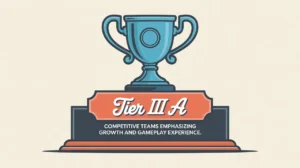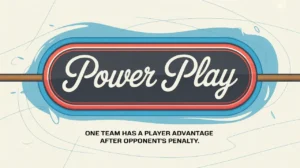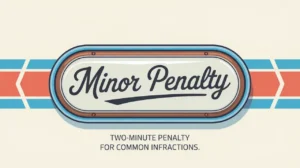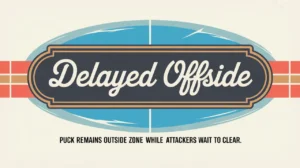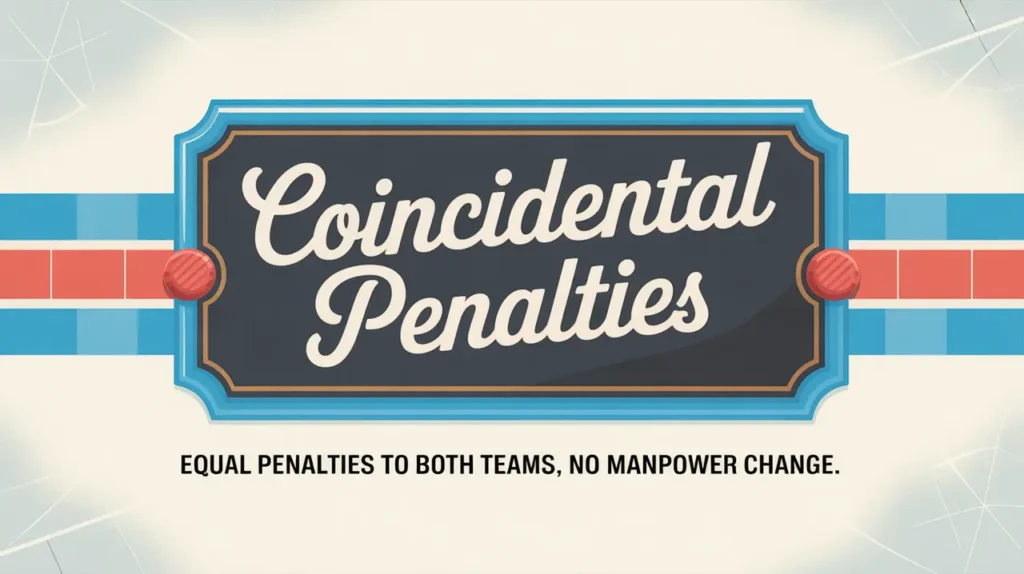Jim’s Intro to the Delayed Penalty
Hi folks, Jim here, the only commentator who once thought a delayed penalty was a penalty stuck in traffic.
What is a delayed penalty?
A delayed penalty occurs when the defending team commits a penalty, but play doesn’t stop immediately because the non-offending team has possession of the puck. The referee raises an arm to signal the infraction, but the whistle doesn’t blow until the penalized team touches the puck or commits another infraction. During this time, the attacking team often pulls their goalie for an extra attacker, creating a 6-on-5 situation to maximize their scoring chance before the penalty is enforced.
It’s one of the most exciting and strategic moments in a game because the team with possession essentially gets a free offensive opportunity.
How does it work?
Here’s the step-by-step of a delayed penalty:
- Penalty Committed: A defending player breaks a rule (e.g., tripping, hooking).
- Referee’s Arm Up: The official raises an arm to signal a delayed penalty.
- Play Continues: The attacking team keeps possession of the puck, and the clock keeps running.
- Goalie Pulled: The attacking team usually pulls their goalie for an extra skater, turning it into a 6-on-5.
- Whistle Blown: Play stops once the penalized team touches the puck, ices it, or commits another penalty.
- Penalty Assessed: The offending player goes to the box, and the attacking team starts its power play.
If the attacking team scores during the delayed penalty, the penalty is still enforced after the goal (unlike on a standard minor where the penalty ends when a power play goal is scored).
Common Situations Leading to Delayed Penalties
- Hooking or Tripping on a Rush: A defender hauls down a puck carrier, but the attacking team keeps possession.
- Holding or Interference: Away from the puck, leading to a stoppage delay.
- Offensive Zone Plays: Teams cycle the puck to maintain possession until the whistle.
- Bench Minors: Too many men or delay of game infractions can also trigger delayed calls.
How do you make good decisions with it?
Good delayed penalty decisions revolve around possession, patience, and awareness.
- For the Attacking Team:
- Maintain possession at all costs. No risky passes that lead to turnovers.
- Use the extra skater effectively. Stretch the defense and look for seams.
- Pull the goalie smartly. Make sure the puck is under control before making the switch.
- For the Defending Team:
- Don’t touch the puck until you absolutely have to. If possible, pressure and try to force a turnover without making things worse.
- Avoid committing a second penalty, which can stack infractions and lead to 5-on-3 situations.
How do you master it?
Mastering delayed penalty situations requires sharp communication and practiced structure. Teams drill 6-on-5 setups to capitalize on the extra attacker. Players learn to spread the ice, move the puck quickly, and look for backdoor plays or point shots through screens. Defensively, players focus on controlled pressure and smart positioning to avoid compounding mistakes.
What does it look like when done right?
A textbook delayed penalty play looks calm and deliberate. The attacking team regroups in the neutral zone, sets up in formation, and works the puck patiently until they find a lane for a high-quality shot. Sometimes, the puck movement is so crisp that it feels like a power play already started. When done wrong, a rushed pass can lead to a turnover and sometimes, yes, a hilarious but painful own goal into the empty net.
Commentator’s Corner
Jim’s Take
I’ve seen delayed penalties turn into highlight-reel goals and into blooper reels. The difference is patience and poise with that extra skater.
Parent Tip
Help young players understand that a raised arm doesn’t mean “stop.” Teaching them to stay composed during delayed penalties sets them up for smarter plays later.
Player Tip
When you see that arm go up, slow down mentally, not physically. Use the extra attacker wisely and don’t force low-percentage plays.
A Final Thought
The delayed penalty is hockey’s built-in advantage play. Handle it with composure and you can turn a penalty against your opponent into an early momentum swing before the power play even begins.


